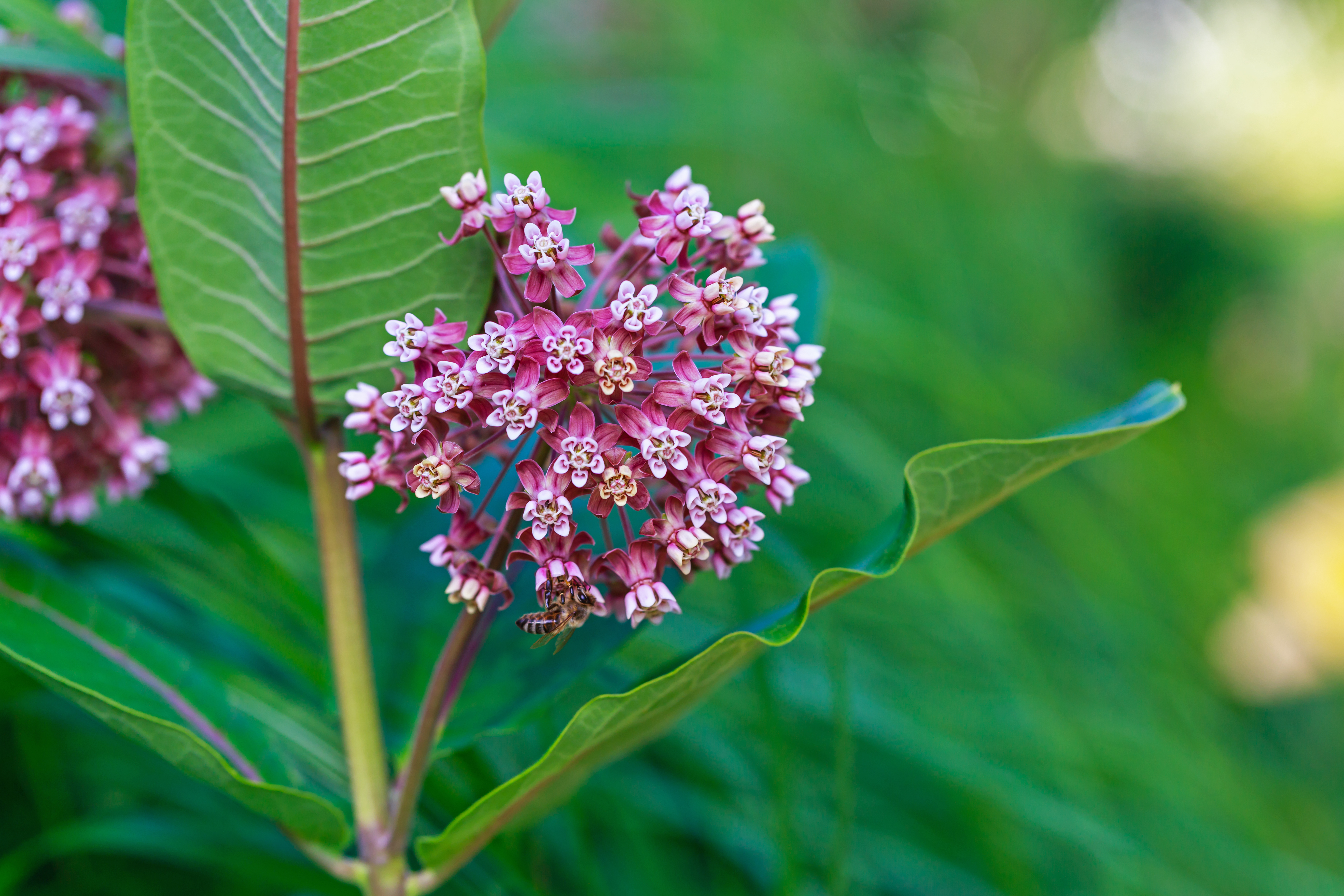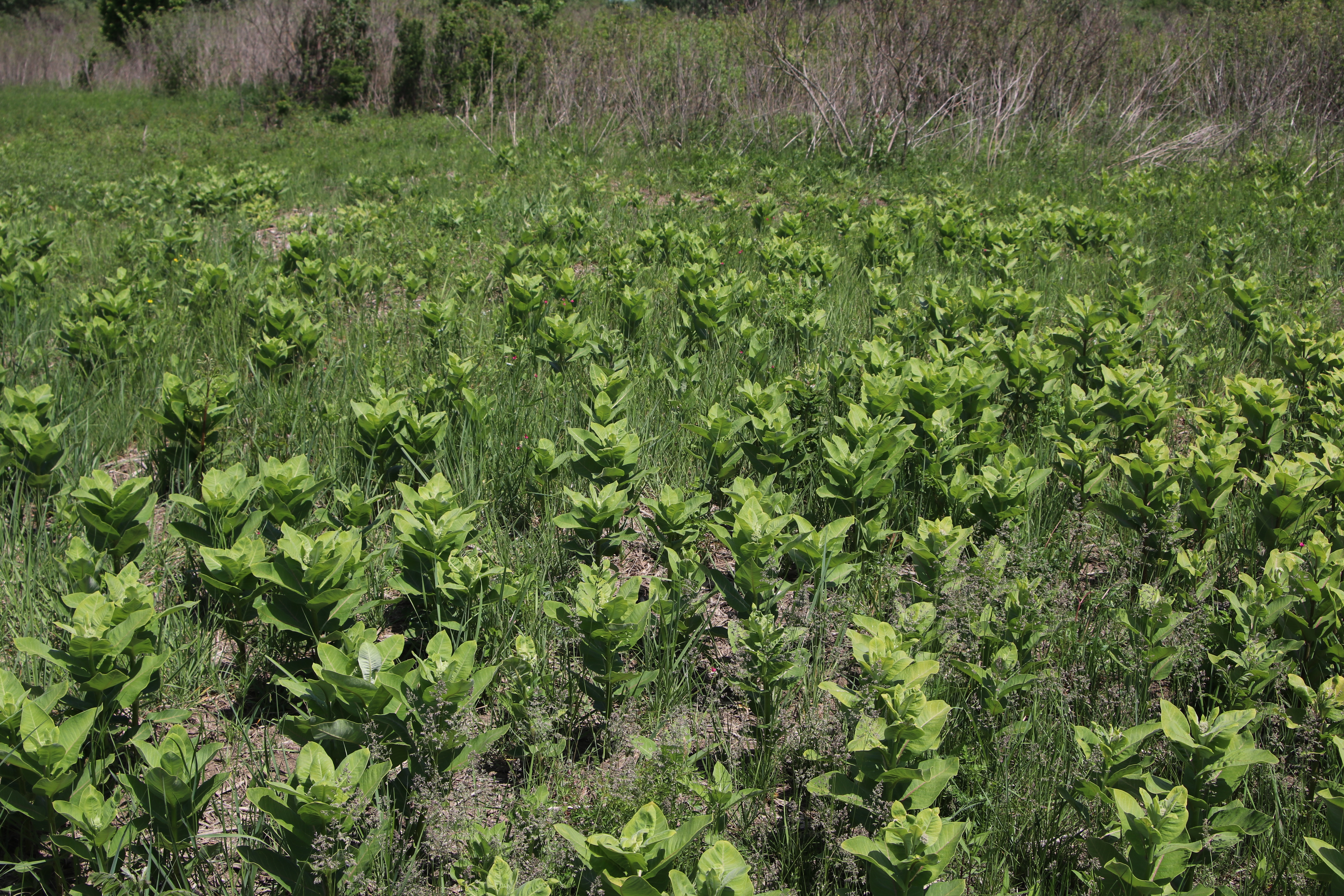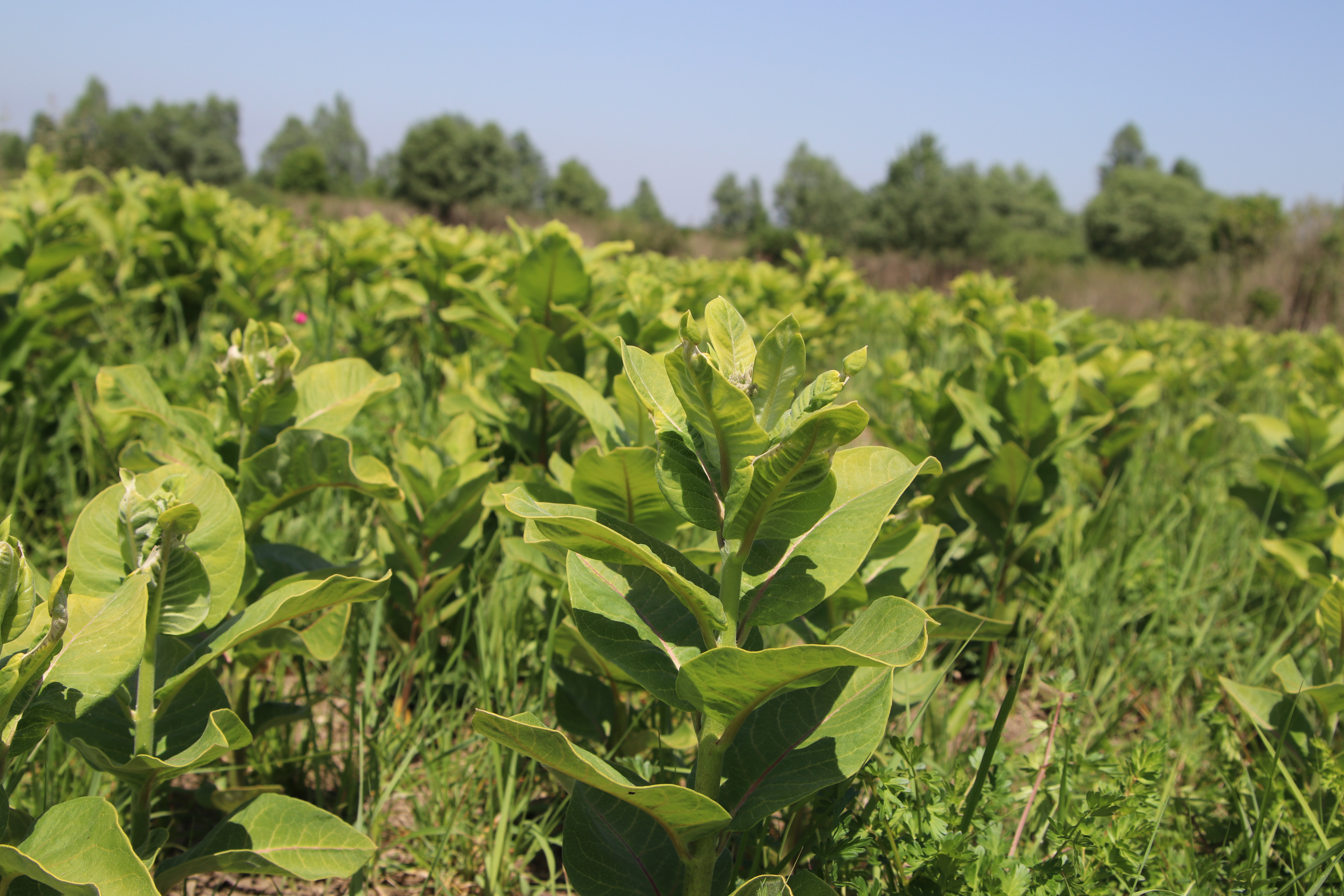Sava TIES - GET TO KNOW THE INVASIVE ALIEN PLANTS - Common milkweed
18-01-2021
Common milkweed is a robust herbaceous perennial, 80 to 150 cm high. It has a branched network of roots that is like a rootstock (underground stem), which enables new stems to grow very successfully from these underground parts, making common milkweed extremely successful in vegetative propagation. The flowers are small and clustered in large inflorescences with a nice and sweet scent and a cream to crimson colour. They are pollinated by insects. The leaves are opposite and from 15 to 25 cm long. It blooms from June to August, and in autumn it develops about 8 cm long fruits which look like a parrot.
Common milkweed origins from eastern parts of North America. It was introduced to Europe in the 17th century as an ornamental plant and can still be found in many gardens today. In Croatia, it is first mentioned in the literature in the 19th century. It primarily occurs in habitats of impaired quality due to human action and where its natural competitors are not widespread. It can be found mostly in neglected fields and pastures, along river valleys, roads and railways, on river embankments and in similar places.

Common milkweed (Author: nnattalli/Shutterstock.com)
It was initially thought that it was possible to exploit this plant in many ways. Young shoots could be eaten after soaking in warm water, making it a kind of substitute for asparagus, but it was later discovered that at this exact stage they are slightly toxic. Juice, wine and essential oils were made from the flowers, while silk and insulating material were made from the seeds' "hair", oil was squeezed from the seeds, and there were attempts to use its milky juice to make natural rubber. Because of all this, it was even cultivated in the late 19th century. It soon turned out that it was economically completely unprofitable for the stated purposes. The only profitable use is for beekeeping, i.e. for honey production. It causes great direct damage by overgrowing fertile land, vineyards, young forest plantations and railways and prevents the growth of natural plant communities. Its removal is expensive.
How to remove it?
Applying herbicide has been proven as the most effective method of removal, but it should not be applied near aquatic habitats and in protected areas. Frequent mowing is good for reducing the number of plants, which is also a healthier option for man and nature. It is also possible to use grazing sheep, but they should generally be fenced off on a smaller area in order to force them to eat common milkweed. Also, sheep should not be fed for a longer period of time, due to health reasons.
Did you know?
All parts of the plant contain milky juice, which is poisonous and causes diarrhoea, shortness of breath, cramps and balance problems.


Surface overgrowth (Author: Zeleni prsten Public Institution of Zagreb County)
News in national languages:
Croatia - Zeleni prsten Public Institution of Zagreb County or Lonjsko Polje Nature Park Public Institution
Slovenia - Public Institution Ljubljansko barje Nature Park
Bosnia and Herzegovina - Center for Environment or Public Company National Park "Una"
Serbia - Institute for Nature Conservation of Vojvodina Province or Nature Conservation Movement Sremska Mitrovica or Public Enterprise „Vojvodinašume“
Germany - EuroNatur
